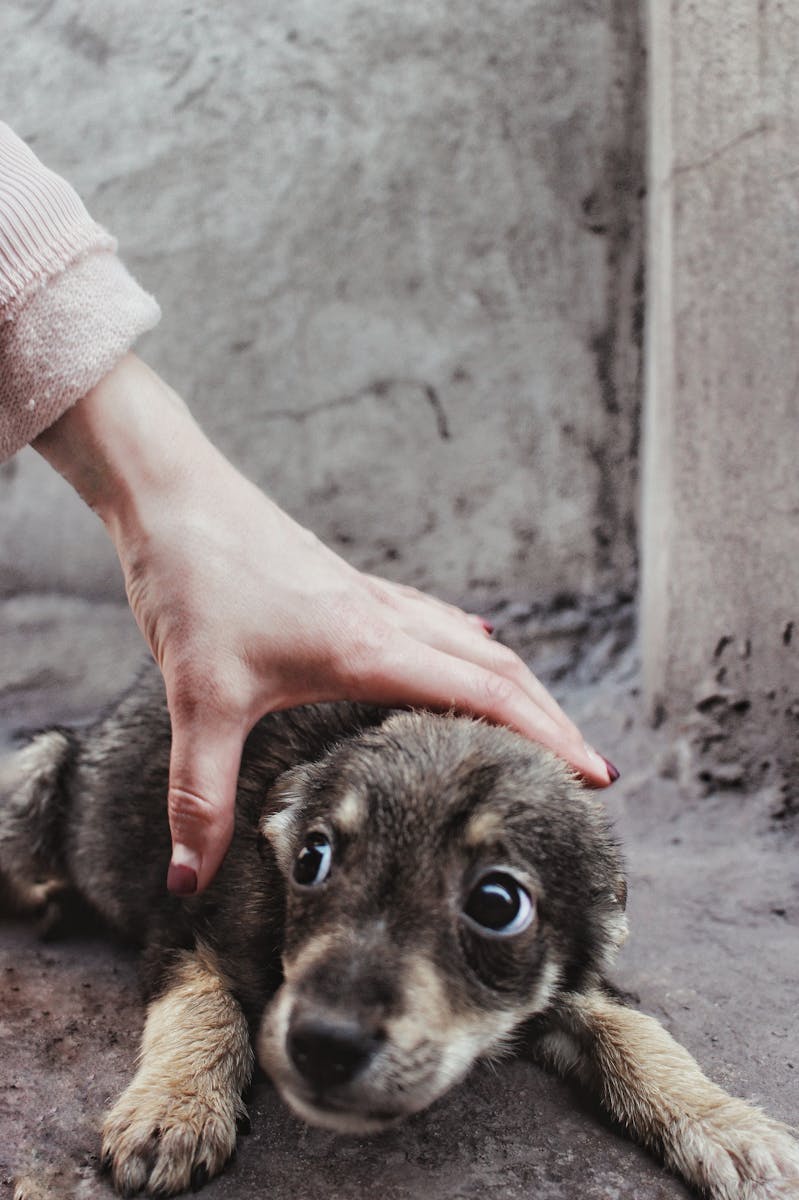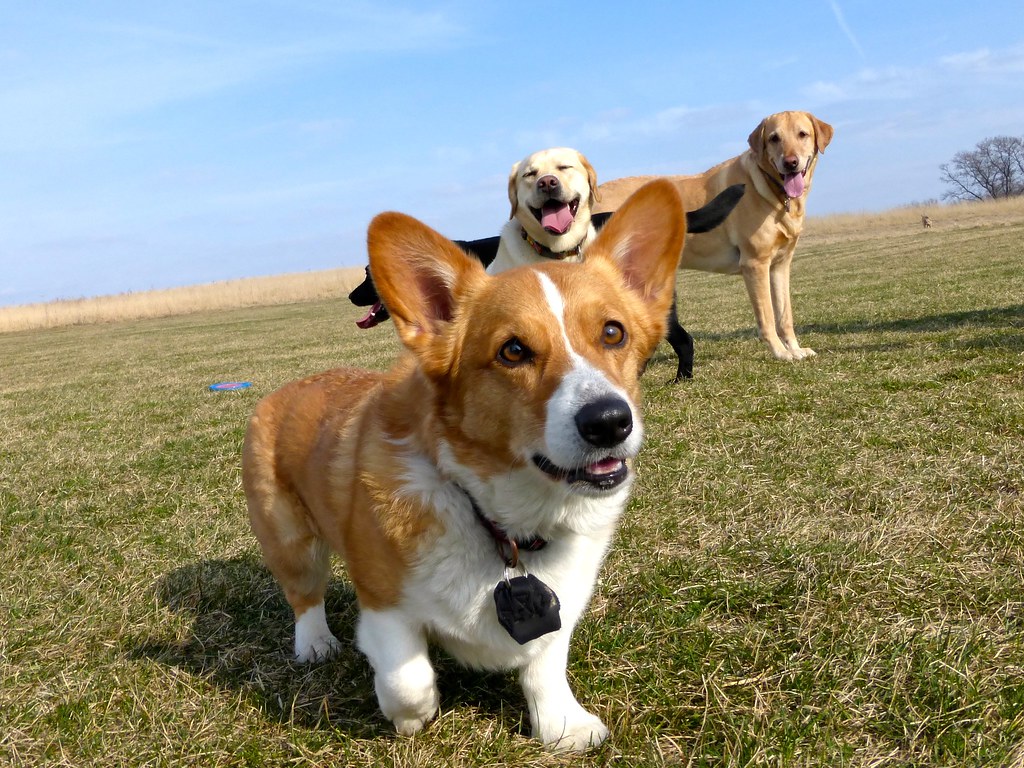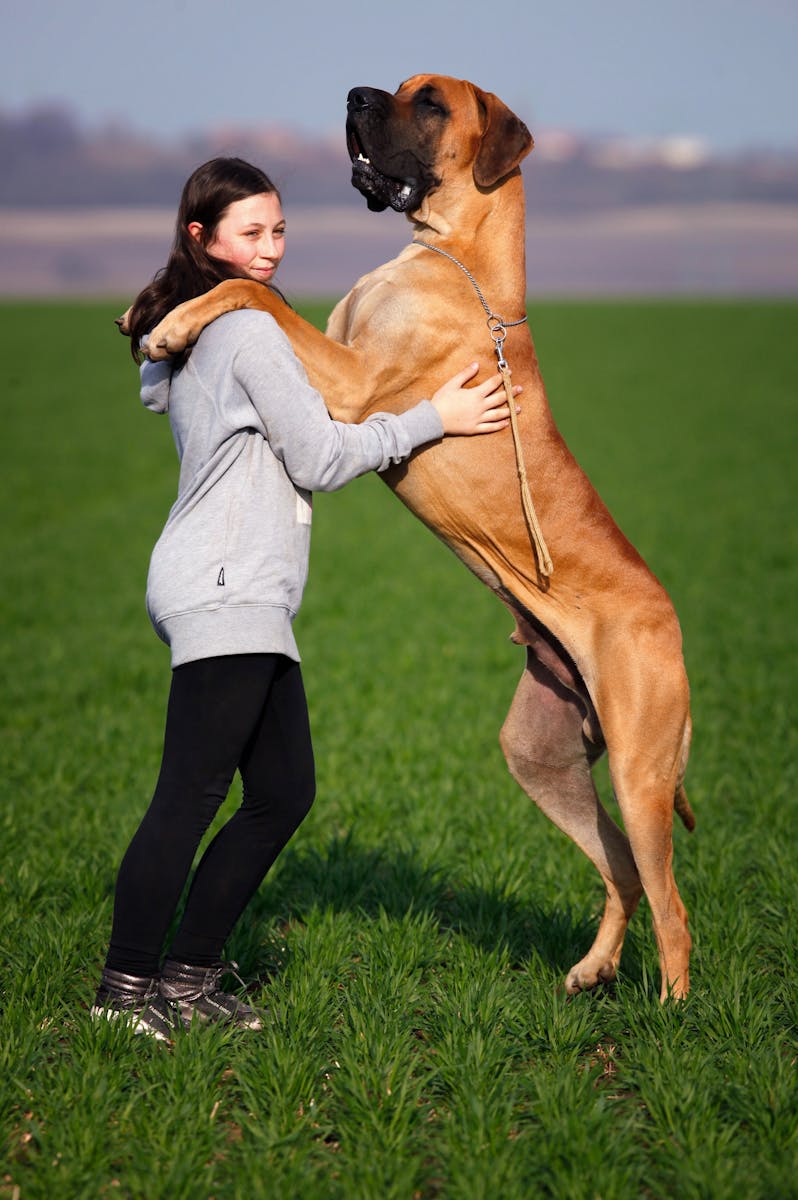Positive Reinforcement Techniques for Anxious Pets
Understanding Anxiety in Pets: Signs, Symptoms, and Causes
As pet owners, we cherish the bond we share with our four-legged friends. Just like us, pets can experience a range of emotions, including anxiety. Understanding anxiety in pets is crucial not only for their well-being but also for fostering a harmonious relationship between you and your furry companion. In this blog post, we’ll explore the signs and symptoms of anxiety in pets, delve into its underlying causes, and equip you with the knowledge to recognize when your pet may be struggling.
What is Anxiety in Pets?
Anxiety in pets can be defined as a state of unease or distress that can manifest in various forms. It is important to understand that anxiety is not simply a phase or behavior; it is a legitimate emotional condition that can have profound effects on a pet’s quality of life. Just like humans, pets can experience anxiety in response to changes in their environment, alterations in routine, or even traumatic experiences.
Key Signs That Your Pet Might Be Anxious
Identifying anxiety in pets often requires keen observation. While pets may not communicate their feelings verbally, they express anxiety through behavior and body language. Here are some common signs to look for:
- Excessive Vocalization: If your pet barks, whines, or meows more than usual, it may be a sign of anxiety. This vocalization could be triggered by fear of separation, loud noises, or new environments.
- Destructive Behavior: Pets suffering from anxiety might chew on furniture, scratch at doors, or dig excessively in the yard. This destructive behavior is often a way to cope with their stress.
- Urinating or Defecating Indoors: While house training usually prevents this behavior, anxiety can lead to sudden accidents inside the house, especially if your pet feels overwhelmed or threatened.
- Changes in Appetite: A sudden change in your pet’s appetite—whether it’s eating significantly less or overeating—could indicate anxiety. Stress can cause pets to lose interest in food or, conversely, seek comfort in eating.
- Physical Signs: Pay close attention to signs like excessive panting, pacing, yawning, or a change in posture (such as tucking their tail or flattening their ears). These physical indicators often accompany anxiety.
- Withdrawal or Avoidance: An anxious pet may hide, avoid interaction, or seem disinterested in favorite activities or play. This withdrawal can be particularly noticeable in social pets who typically enjoy human and animal interaction.
Common Causes of Anxiety in Pets
Understanding the underlying causes of anxiety in pets is essential for effective management. Anxiety may arise from:
- Separation Anxiety: Many pets experience anxiety when their owners leave them alone. This behavior is particularly common in dogs who see their owner as a source of security. The distress can lead to excessive barking, destructive behavior, or even attempts to escape.
- Noise Phobia: Loud sounds like thunderstorms, fireworks, or construction noise can send pets into a panic. This type of anxiety can manifest as hiding, shaking, or even aggression toward their surroundings.
- Change in Environment: Moving to a new home, introducing a new pet, or experiencing changes in the household can be unsettling for pets. They thrive on routine and familiarity, so changes can lead to anxiety.
- Trauma or Abuse: Pets that have had negative experiences in the past, such as abandonment or abuse, may carry emotional scars that trigger anxiety. This may lead to heightened sensitivity to certain situations or interactions.
- Health Issues: Sometimes, anxiety is a symptom of an underlying health problem. Conditions such as thyroid issues, neurological disorders, or chronic pain can cause or exacerbate anxiety in pets.
Recognizing Anxiety in Different Pets
While dogs often display anxiety through obvious behavioral changes, cats can be more subtle in their signs. Here’s how to recognize anxiety in each:
- Dogs: Watch for barking, destructive chewing, and pacing. Signs may escalate during stressful times such as thunder or being left alone.
- Cats: Look for signs like increased hiding, excessive grooming, or litter box issues. Cats may also start to lash out unexpectedly or avoid interaction altogether.
What You Can Do
Recognizing the signs of anxiety in pets is an important first step. Once you become aware, you can begin to take action to help alleviate their distress. Options range from creating a safe space for your pet to seek refuge during stressful times, to exploring behavioral training techniques or consulting with a vet about potential treatment options.
Behavioral Interventions
- Desensitization: Gradually expose your pet to the source of anxiety in a controlled environment. For instance, if your dog is fearful of thunderstorms, start by playing recordings of thunder at a low volume while offering treats and praise.
- Creating a Safe Space: Design a comfortable, quiet area where your pet can retreat when feeling anxious. This area should be associated with positive experiences, like treats or toys.
Professional Help
- Veterinary Consultation: If your pet’s anxiety is severe or persistent, consult a veterinarian. They can provide insights, recommend behaviorists, or prescribe medications if necessary.
- Professional Training: Consider working with a certified animal behaviorist or trainer who can help address specific anxiety issues and develop coping strategies.
Understanding anxiety in pets is paramount for ensuring their happiness and health. By recognizing the signs and symptoms and knowing the causes of anxiety, you can take meaningful steps to improve the well-being of your beloved companions.
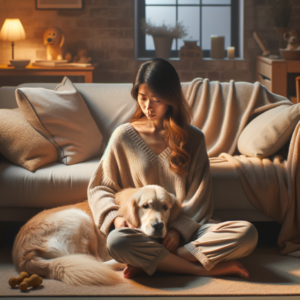
Benefits of Positive Reinforcement
The Power of Positive Reinforcement in Training Anxious Pets
When tackling anxiety in pets, the training method you employ can significantly influence your pet’s emotional state and overall well-being. One of the most effective techniques available to pet owners is positive reinforcement. This method not only aids in alleviating anxious behaviors but also strengthens the bond between pet and owner.
What is Positive Reinforcement?
Positive reinforcement is a training philosophy based on rewarding desired behaviors to encourage their repetition. Rather than focusing on punishment or discouraging negative behaviors, positive reinforcement emphasizes rewarding your pet for good actions, making it an ideal technique for anxious pets. Research has shown that this approach fosters a more trusting and loving relationship between pets and their owners, which is crucial for alleviating anxiety.
Why Positive Reinforcement Works for Anxious Pets
- Builds Trust Between Owner and Pet
An anxious pet may lack confidence due to past trauma or uncertainty in their environment. Positive reinforcement helps establish a safe space where they associate their owner with comfort and security. Instead of fearing removal of privileges or scolding, pets learn that following commands or exhibiting calm behavior results in pleasant rewards like treats, playtime, or affection.
- Decreases Fear Responses
When you reward your pet for calm behavior, you effectively teach them that there is no need to fear certain stimuli that previously caused anxiety. For example, if your dog is nervous about loud noises, instead of reprimanding fear responses, reinforce moments of calmness during storms with treats and praise. Over time, this can help desensitize your pet to specific triggers.
- Encourages Desired Behaviors
With anxious pets, certain behaviors—such as barking, hiding, or destructive actions—may arise from fear or discomfort. Positive reinforcement allows you to redirect their behavior towards more appropriate actions. By rewarding your pet for sitting calmly during a stressful situation or engaging in play instead of destructive behaviors, you reinforce the positive response to anxiety-inducing stimuli.
Practical Steps for Implementing Positive Reinforcement
Implementing positive reinforcement effectively involves understanding your pet’s preferences and triggers. Here are some actionable tips to get you started:
- Know What Motivate Your Pet: Each pet is unique. Identify what rewards your pet responds to best. For some, treats might be the ultimate motivator, while others may respond better to toys or verbal praise.
- Timing is Key: Deliver rewards immediately after your pet displays the desired behavior. This immediate feedback helps them connect the behavior with the positive reinforcement.
- Be Consistent: Consistency is crucial when using positive reinforcement. Always reward the behaviors you want to encourage and ignore or redirect negative behaviors. This helps your pet understand what is expected of them.
- Gradual Introduction to Stressors: Use positive reinforcement during exposure to anxiety-inducing situations. For example, if your dog is afraid of fireworks, gradually expose them to similar sounds at a low volume while rewarding calm behavior.
- Use a Marker Signal: A clicker or specific verbal cue can signify to your pet that they are performing the desired behavior. Once they hear the click or cue, follow up with a reward. This clarity can aid understanding and increase their confidence.
Real-World Example of Positive Reinforcement in Action
Consider a case study of a dog named Bella, who experienced separation anxiety. Whenever her owner left the house, Bella would bark, whine, and even try to escape. Rather than scolding her for this behavior, the owner decided to use positive reinforcement.
Initially, they began with a short separation, rewarding Bella with treats whenever she remained calm. Gradually, they extended the duration of the separations while consistently rewarding Bella’s peaceful behavior upon their return. Over time, Bella learned to remain calm while her owner was gone, and her anxiety significantly diminished.
This example showcases how a thoughtful application of positive reinforcement can alter a pet’s anxiety-driven responses, guiding them towards specific behaviors while soothing their emotional state.
The Lasting Benefits of Positive Reinforcement
The repercussions of positive reinforcement extend beyond just alleviating anxiety. Not only does it create a trusting relationship between pet and owner, but it also fosters a more obedient and well-adjusted pet. Over time, the benefits of a stable emotional state and improved behavior can lead to a more harmonious living situation.
Moreover, the bonding experience achieved through positive reinforcement is invaluable. Pets that feel secure and understood are more likely to develop strong ties with their owners, enhancing companionship and mutual happiness.
Utilizing positive reinforcement to manage your pet’s anxiety opens the door to a rewarding relationship filled with positivity, trust, and affection. 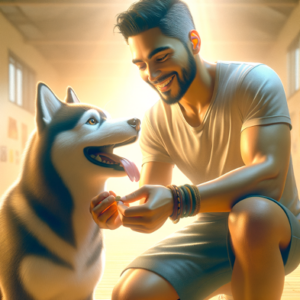
Common Triggers for Anxious Pets
Identifying typical triggers that may cause anxiety in pets is essential for pet parents looking to nurture their furry companions’ emotional well-being. Understanding and recognizing these triggers can empower you to modify their environment and behavior, ultimately leading to a more stable and happier pet. Here are some common anxiety-inducing situations to be aware of:
- Loud Noises
- Many pets experience severe anxiety due to loud sounds that seem alarming or frightening. This can include fireworks, thunderstorms, or loud noises from household appliances. Not only can the volume be startling, but the unpredictability of these sounds can exacerbate the fear. For instance, a loud clap of thunder could send a dog trembling to its owner, seeking comfort.
- New Environments
- Changes in environment can be particularly stressful for pets, especially when they encounter unfamiliar sights, sounds, or smells. Transitioning to a new home, visiting new places, or being boarded at a kennel can provoke feelings of anxiety. For example, a cat may hide under furniture in an unfamiliar setting, while a dog might bark excessively or whine when exposed to new surroundings.
- Changes in Routine
- Pets thrive on routine, and even minor changes can create stress and anxiety. Whether it’s a change in a feeding schedule, a new family member moving in, or alterations in the owner’s daily activities, these disruptions can create confusion and fear in pets. A change in routine may lead pets to exhibit anxiety-related behaviors, such as pacing, vocalizing, or acting withdrawn.
- Travel
- Traveling can be a significant source of anxiety for pets, regardless of whether they are accustomed to being in a car or on a plane. The unfamiliarity of different locations, along with the stress of being confined in a vehicle or a pet carrier, can exacerbate pre-existing fears. Some dogs may experience motion sickness or become anxious simply from seeing a travel crate.
- Social Interactions
- While many pets enjoy socializing, others may be overwhelmed or anxious during interactions with strangers or other animals. New people or pets entering their space could trigger stress responses. Dogs may act aggressively or shy away, while cats may hide or hiss when feeling threatened by unfamiliar company. Social anxiety can vary widely among breeds and individual animals, so understanding your pet’s comfort level is crucial.
- Separation from Owners
- Separation anxiety is faced by many pets who feel insecure when their owners leave them alone. Dogs, in particular, might express distress through excessive barking or destruction when left unattended. This anxiety can lead to problematic behaviors and is often rooted in their reliance on their owners for stability and comfort.
- Changes in Household Dynamics
- The addition of a new pet or family member, or even the loss of a family member, can disrupt a pet’s sense of security. This transition may lead to feelings of anxiety as pets adjust to new social structures and dynamics. The emotional impact of such changes can vary considerably among pets, with some adapting quickly, while others might struggle for an extended period.
- Health Issues
- Physical health problems can often manifest as emotional distress in pets. Chronic pain, illness, or even severe allergies can lead to anxiety-like behaviors. It’s important to consult a veterinarian to rule out any potential health issues that might be contributing to your pet’s anxious behavior.
Understanding these common anxiety triggers can help you become a more attuned pet owner. By recognizing the situations that may cause distress in your furry friends, you can better prepare to manage their emotions and provide the necessary support.

Creating a Safe Space for Your Anxious Pet
In the previous sections, we’ve explored the various signs, symptoms, and causes of anxiety in pets. Now, let’s focus on one practical aspect of alleviating this distress: creating a safe space for your furry friend to retreat when they feel uneasy. A carefully constructed sanctuary can make a world of difference, helping your pet feel secure and comforted.
Choosing the Right Location
The first step in creating a safe space is selecting the ideal location in your home. Here are some tips to consider:
- Quiet Area: Choose a spot that is removed from household commotion, such as loud TVs, busy rooms, or heavy foot traffic areas. A quiet corner in the living room or a space in a bedroom can serve as a good sanctuary.
- Away from Windows: If your pet is sensitive to outside stimuli, keep their safe space away from windows where they can see passing cars, pedestrians, or other animals that might trigger anxiety.
- Accessibility: Ensure the area is easily accessible for your pet at all times. It should be a place they can retreat to independently when feeling overwhelmed.
Comfort and Familiarity
Once you’ve selected the location, it’s time to make the space inviting and calming. Here are elements that can contribute to creating a soothing environment:
- Cozy Bedding: Provide a soft bed or blanket that your pet is familiar with. This can be an old bed or blanket that carries their scent, making it feel like a safe haven.
- Favorite Toys: Incorporate a few of your pet’s favorite toys or chew items into their safe space. This encourages them to associate the area with positive experiences and helps distract them during anxious moments.
- Calming Scents: Using pet-safe essential oils or calming sprays can enhance the soothing qualities of the space. Lavender and chamomile are known for their relaxing properties. However, always ensure any product is safe for animals before use.
Soundscapes for Relaxation
For many pets, noise can be a significant source of anxiety. Here are ways to mitigate sound disturbances:
- White Noise Machines: Consider using a white noise machine or fan in the area to mask sudden noises that may trigger anxiety. This can create a consistent background hum that is soothing for pets.
- Soft Music: Playing soft, calming music or nature sounds can also help alleviate anxiety. Numerous playlists are specifically designed to soothe animals, reducing stress levels.
Visual Barrier
Sometimes, creating a sense of enclosure can make a space feel more secure for pets. Here’s how to enhance the space visually:
- Pet Crate or Igloo: If your pet enjoys the comfort of a den-like environment, consider using a crate or pet igloo as their safe space. Ensure it has enough room for them to turn around comfortably and is lined with cozy bedding.
- Curtains or Blankets: If you’ve chosen an open area, draping a lightweight blanket or curtain to create a visual barrier can help your pet feel more enclosed and less exposed to potential stressors in the environment.
Positive Reinforcement
To encourage your pet to use their safe space:
- Train with Treats: Use treats or their favorite toys to lure them into the safe zone. When they go to their designated area, reinforce the behavior with praise and rewards to establish a positive association.
- Routine Visits: Encourage your pet to visit this area during lower-stress times. Create a habit of going into their safe space for relaxation or during calm activities such as reading or cuddling.
Checking In
Regular supplies and maintenance of the safe space are also crucial:
- Clean Comfort: Regularly wash bedding, toys, and any materials in the safe area to keep it clean and odor-free. A tidy space will feel more inviting.
- Watch for Changes: Keep an eye on your pet’s behavior in relation to their safe space. If they avoid it or show signs of elevated anxiety even when in the area, you may need to reassess and make adjustments.
Creating a safe space for your pet can significantly contribute to their emotional well-being during stressful times.
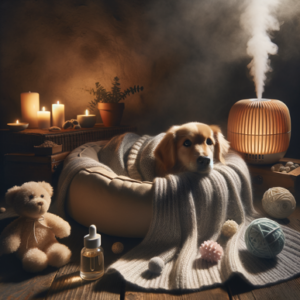
Using Treats for Positive Reinforcement
When it comes to training our anxious pets, the method of positive reinforcement can be a game-changer. Among various rewarding tools, treats hold a prominent place due to their immediate and tangible nature. Utilizing treats effectively can not only help to foster calm behavior but also strengthen the bond between you and your pet. The key factors that dictate the successful use of treats include treat selection and timing.
Treat Selection: Choose Wisely
The first step in using treats as a positive reinforcement tool is selecting the right ones. Here are some considerations to ensure you’re choosing treats that will work effectively for training anxious pets:
- High-Value Treats: Anxious pets may require extra motivation to overcome their fears. High-value treats—such as small pieces of cooked chicken, cheese, or commercial treats specifically designed for training—tend to be more effective than regular kibble. The goal is to choose something your pet finds irresistible.
- Healthy and Safe Options: While it’s important to have enticing treats, you also want to ensure they’re healthy. Look for treats with natural ingredients and no artificial additives. This not only benefits your pet’s health but also alleviates any associated digestive stress, which can also contribute to anxiety.
- Size Matters: Choose bite-sized treats that can be quickly consumed. This means you can offer multiple rewards during a single training session without overwhelming your pet. If you’re using larger treats, consider breaking them into smaller pieces before training begins.
- Special Occasion Treats: Depending on your pet’s level of anxiety and training needs, you might reserve certain “special” treats for particularly challenging situations. This can create a stronger association between facing fears and receiving rewards, enhancing their motivation to engage positively with the challenging scenarios.
The Importance of Timing
Even the best treats can fall flat if not delivered at the right moment. Timing is crucial when it comes to using treats as a positive reinforcement tool. Proper timing helps to reinforce desired behaviors instantaneously, allowing your pet to connect the reward with their actions effectively. Here’s how to utilize timing to its full potential:
- Immediate Rewarding: The closer the treat delivery is to the moment your pet exhibits calm behavior, the clearer the connection will be made. For example, if your dog remains calm during a loud noise, provide a treat immediately afterward. This will help your dog understand that their calmness in a stressful situation is what earned them the reward.
- Frequent Rewards: During the initial stages of training or when your pet is particularly anxious, it’s beneficial to reward frequently. For example, if you’re training your dog to stay calm at the vet, treat them for every few seconds they remain relaxed during the visit. As they start to become more comfortable, you can gradually reduce the frequency of treats.
- Marking the Behavior: Use a marker word or clicker immediately before giving the treat to solidify the connection. For instance, saying “yes” or using a clicker just as your pet showcases calm behavior signals that they are doing the right thing. Follow up with the treat promptly to reinforce the association.
- Utilize Controlled Environments: Start treat training in a controlled, familiar environment where your pet feels safe. As your pet becomes more accustomed to receiving treats for calm behavior in a low-stress setting, gradually introduce them to more challenging environments, applying the same principles of timing.
- Adjusting Timing for Different Pets: Just like humans, every pet has its individual response to anxiety. Keep in mind that for some anxious pets, they may need a few moments to calm down before a treat is offered. Observe and adjust your timing based on their specific reactions—patience and adaptability can go a long way.
Using treats can be an effective strategy for modifying behavior patterns in anxious pets. By combining thoughtful treat selection with precision timing, pet owners can create a positive learning environment that encourages calmness and builds confidence.

Clicker Training Basics
Clicker training is an invaluable tool for pet owners looking to shape and reinforce desired behaviors in their pets using the power of positive reinforcement. By employing a small, handheld device known as a clicker, pet owners can effectively communicate with their furry companions and reward them for exemplary behavior. This method not only enhances the bond between pet and owner but also ensures that training sessions remain fun and engaging.
How Clicker Training Works
At its core, clicker training relies on the principles of operant conditioning, which means that pets learn to associate their behaviors with positive consequences. Here’s how it works:
- The Clicker: The clicker produces a distinct sound that serves as a consistent marker for the pet when they display the desired behavior. This sound is instantly recognizable and provides immediate feedback.
- Timing is Key: The click should occur the moment your pet performs the desired action, such as sitting, staying, or coming when called. This precise timing helps the pet understand exactly what behavior is being rewarded.
- Follow with a Reward: After the click, it’s essential to follow up with a reward—typically a treat, praise, or playtime. This reinforces the behavior, making it more likely for the pet to repeat it in the future.
The Benefits of Clicker Training
Clicker training offers numerous benefits for both pets and owners, making the training process more effective and enjoyable:
- Clear Communication: The click sound provides clear and immediate feedback, reducing confusion for your pet. They learn quickly what action earns them a reward.
- Reduces Frustration: Unlike corrections or negative reinforcement, clicker training focuses on steering pets toward desirable behaviors, minimizing frustration for both the owner and the pet.
- Strengthens the Bond: Engaging in training sessions using clicker methods can enhance the pet-owner relationship by building trust and improving communication.
- Versatility: Clicker training can be applied to a variety of behaviors, from basic commands to complex tricks, making it a versatile tool for pet owners.
Rules for Effective Clicker Use
To make the most of your clicker training experience, follow these essential rules to ensure effective communication and reinforce the desired behaviors:
- Consistency is Crucial: Always use the clicker in the same context. The clicker should only be used during training sessions and not be associated with any negative events or scolding.
- Be Quick with the Click: Ensure that the timing of your click is almost instantaneous with the behavior you want to reinforce. Delayed clicks can confuse your pet and diminish the effectiveness of the training.
- Keep Sessions Short and Fun: Pets, especially dogs, can lose focus if training sessions are too long. Aim for 5-10 minute sessions, filled with enthusiasm and positivity.
- Use High-Value Rewards: Early in the training process, use high-value treats that your pet finds particularly enticing. As your pet becomes more skilled, you can gradually reduce the frequency of treats while still rewarding with praise or play.
- Fade the Clicker Over Time: As your pet masters a behavior, gradually reduce your use of the clicker and treats, transitioning to verbal praise or a pat. The goal is for your pet to respond to your commands without always relying on a reward.
- Be Patient and Observant: Each pet is unique and learns at their own pace. Remain patient, observant, and flexible, so that you can adapt your approach as needed to suit your pet’s individual learning style.
Real-World Example of Clicker Training
Imagine you have a dog named Max who enjoys jumping up on visitors. Instead of scolding Max, use clicker training to teach him a more appropriate way to greet people. Here’s a step-by-step approach:
- Gather your materials: Take the clicker and some of Max’s favorite treats to the training area.
- Choose a helpful spot: Thoroughly desensitize Max to visitors by recruiting a friend or family member to help with the training while positioned at the door.
- Start small: Before the guest arrives, practice rewarding Max for sitting calmly or remaining in place. Click each time he does so, followed immediately by the treat!
- Introduce the scenario: Once Max gets the idea, have your friend enter. If he stays seated, click and reward; however, if he jumps up, encourage him back down and wait for the appropriate behavior.
- Reinforce positivity: Repeat this training multiple times, gradually increasing the difficulty—for instance, allowing the guest to greet and pet Max, where he must remain calm.
This method not only teaches Max good manners but also turns what could be seen as disruptive behavior into a positive experience.
By incorporating clicker training into your pet care routine, you can effectively promote desired behaviors, reduce anxiety-induced actions, and enhance the overall quality of your relationship with your furry friend. With the above rules and examples, you’re now equipped to embark on your journey of clicker training.
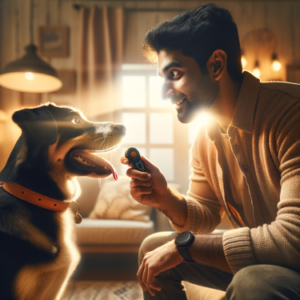
Consistency in Training: The Cornerstone of Anxiety Management
When it comes to alleviating anxiety in pets, consistency in applying positive reinforcement techniques is key. Dogs and cats alike thrive on routine, and a consistent approach to training can help them learn desired behaviors over time. The power of positive reinforcement lies in its focus on rewarding good behavior rather than punishing undesirable actions, which can further exacerbate anxiety. Keep reading to discover how applying consistent and positive methods can be instrumental in training your anxious pet.
Understanding Positive Reinforcement
Positive reinforcement is a behavioral training technique that encourages pets to repeat desirable behaviors through rewards. Whether using treats, praise, or playtime as incentives, this technique aims to create a positive association with specific behaviors. For pets experiencing anxiety, this method is not just effective but also vital for their mental well-being.
- Rewards Matter: The key is to ensure that the rewards are significant enough to motivate your pet. High-value treats can be an excellent tool for reinforcing behaviors effectively. For instance, if your dog is anxious about meeting new people, offering a tasty treat each time they are calm and relaxed can build a positive connection with the experience.
- Timing is Crucial: Timing affects how well desired behaviors are reinforced. Be sure to reward your pet immediately after they exhibit the desired behavior. This immediate feedback helps them make the connection between their actions and the reward. For example, if your cat uses a scratching post instead of the furniture, praise them right after and offer a small treat.
Building a Routine
Creating a structured training routine helps pets feel more secure and reinforces good behavior. This routine should include regular training sessions, playtime, and quiet time. Here are some actionable tips to establish a routine that promotes consistency:
- Daily Training Sessions: Aim for short but frequent training sessions—about 5 to 10 minutes throughout the day. This keeps your pet engaged and eager for new challenges, decreasing their anxiety.
- Establish Duration and Frequency: Consistency means doing things at the same time every day. For instance, if you train your dog to sit before each meal, ensure this routine becomes part of mealtime. Repetition builds comfort and understanding for your pet.
- Checkpoints for Progress: Keep a record of your pet’s progress. Noting improvement can show you how effective your methods are and help you adjust your training strategy when needed. If your anxious pet is learning to respond positively to training, celebrate this achievement.
Problem-Solving Techniques
In moments of anxiety, your pet may display behaviors that are counterproductive to relaxation or calmness. Employing positive reinforcement consistently helps redirect anxious behaviors toward more desirable ones. Here are some strategies:
- Redirecting Fear: If your dog is spooked by loud noises, you can create a positive association by rewarding them with treats when they remain calm during these events. Over time, they will learn that they can cope with the noise with your support.
- Controlled Exposure: Gradually introducing your pet to stressful situations can help them become more resilient to anxiety triggers. For example, if your pet gets anxious around strangers, start with a controlled environment where they can observe people from a safe distance. Gradually reduce that distance while rewarding calm behavior.
- Incorporating Training into Daily Life: Make your pet’s training a part of daily scenarios. Use everyday interactions—like walking on a leash or entering a car—as an opportunity to reinforce calm behavior. Reward them when they exhibit desired behaviors during these situations.
The Role of Patience and Persistence
Training an anxious pet is not a quick fix; it requires patience and persistence. Here are a few things to remember as you work toward building a consistent training framework:
- Don’t Rush the Process: Every pet learns at their own pace, which means some may take longer to adjust than others. If your pet is not progressing as quickly as you hope, evaluate what might be causing the delay and adjust your training techniques accordingly.
- Stay Positive: Your demeanor should remain positive and encouraging. If you demonstrate frustration during training, pets can pick up on this emotion, which may reinforce their anxiety rather than alleviate it.
- Collaborate with Family: Ensure that everyone in the household is on the same page when it comes to training techniques. Consistent approaches among all family members promote a unified message to the pet, helping them feel more secure and supported.
Getting Professional Help
If your pet’s anxiety is unmanageable, seeking help from a professional trainer or behaviorist specialized in anxiety can provide tailored support. This is particularly essential for severe cases, where expert guidance can help identify and implement the most effective training strategies.
Consistency in applying positive reinforcement techniques will pave the way for your anxious pet to learn desired behaviors over time. By building a structured and supportive training routine, you enable your pet to regain confidence, helping them navigate their world with reduced anxiety and improved well-being.
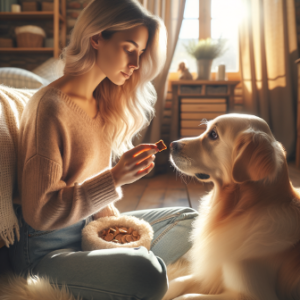
Gradual Exposure Techniques for Comforting Anxious Pets
As a pet owner, witnessing your furry friend suffer from anxiety can be heart-wrenching. Fortunately, gradual exposure techniques offer a practical and humane method for helping your pet become more comfortable with anxiety-inducing situations. By allowing your pet to approach these stimuli at their own pace, you can foster resilience and reduce their anxiety over time.
Here, we’ll delve into the specifics of gradual exposure techniques and provide actionable strategies for implementation.
What is Gradual Exposure?
Gradual exposure, also known as systematic desensitization, involves slowly introducing your pet to the anxiety-inducing stimuli in a controlled manner. The goal is to decrease their sensitivity to the trigger, thereby reducing their fearful response. Unlike flooding, where a pet is exposed to a stimulus at full intensity immediately, gradual exposure allows pets to acclimate to the presence of the anxiety-inducing situation incrementally.
How to Implement Gradual Exposure Techniques
- Identify the Triggers: The first step in gradual exposure is to identify the specific situations, sounds, or environments that elicit anxiety in your pet. Common triggers for dogs may include:
- Loud noises (thunder, fireworks)
- Stranger interactions
- Separation from their owner
- New environments For cats, triggers could involve:
- Changes in routine
- Visits to the veterinarian
- Introduction of new pets or people
- Start Small: Begin the process by presenting your pet with the trigger at a very low intensity. For example, if your dog is fearful of loud noises, start by playing a recording of the sound at a volume that is barely perceptible to them. The key here is to ensure that your pet remains calm. Pair this exposure with positive reinforcement, such as treats, praise, or playtime. This helps create a positive association with the trigger.
- Gradual Increase: Once your pet demonstrates comfort at the initial level of exposure, gradually increase the intensity of the trigger. For dogs, this might mean raising the volume of the recorded noise by small increments. Ensure that you take your time with this process—rushing can lead to setbacks and may reinforce your pet’s anxiety.
- Create Positive Experiences: During exposure sessions, actively engage your pet in enjoyable activities. Use treats, toys, or affection to create a positive experience while they are exposed to the trigger. This helps shift their focus away from the anxiety and towards positive associations.
- Monitor Their Reactions: It’s essential to closely observe your pet’s body language and reactions during each exposure session. Signs of discomfort or distress, such as growling, whining, or attempting to escape, indicate that you may need to decrease the intensity of exposure. Move at a pace that your pet feels comfortable with.
Practical Examples of Gradual Exposure
- Thunder Anxiety in Dogs: Start by playing a low-volume recording of thunder while engaging your dog in a play favorite. Gradually increase the volume over several sessions, ensuring that your dog remains calm and is rewarded throughout the process.
- Car Anxiety in Cats: If your cat is stressed during car rides, begin by introducing them to the car while it’s parked. Let them explore the environment with the car off, using treats to create a positive association. Once they are comfortable, you can start the engine for short periods while rewarding calm behavior.
- Avoidance of Strangers: For dogs that are anxious around new people, ask a friend to approach while remaining at a distance. Slowly decrease that distance over time while rewarding your dog with treats for calm behavior. This process can help desensitize them to the presence of strangers.
Important Considerations and Tips
- Be Patient: Gradual exposure takes time, and each pet may progress at their own pace. Celebrate small victories and remain patient throughout the process.
- Consistency is Key: Regular and consistent exposure to the anxiety-inducing situation can strengthen your pet’s ability to handle stressors. Dedicate time each week to work on exposure techniques.
- Know When to Seek Help: If you find that your pet is not progressing or appears to be worsening, consider seeking guidance from a professional trainer or a veterinary behaviorist for additional strategies tailored to your pet’s needs.
By implementing these gradual exposure techniques, you can equip your pet with healthy coping mechanisms, leading to a happier and more relaxed companion. Each small step toward overcoming anxiety can make a significant difference in their quality of life.

Socialization and Anxiety
How Socialization Can Help Reduce Anxiety in Pets
Socialization plays a pivotal role in a pet’s emotional health and can significantly alleviate anxiety. By introducing pets to new experiences, environments, and other animals—particularly in a positive manner—you create opportunities for them to build confidence and resilience. Let’s explore how effective socialization techniques can help reduce anxiety in pets and how positive reinforcement enhances these interactions.
Understanding the Benefits of Socialization
Socialization helps pets learn how to navigate their environment. It’s not just about meeting other dogs or people; it’s about helping them understand that new experiences can be positive rather than intimidating. Here are some key benefits of socialization for anxious pets:
- Increased Confidence: Exposure to various social settings and stimuli can diminish the unknowns that often trigger anxiety. A well-socialized pet learns that not every new experience poses a threat.
- Improved Stress Management: Regular social exposure equips pets with coping strategies for handling stressful situations, making them less likely to react with fear or aggression.
- Enhanced Bonding: Socialization provides opportunities for positive interactions with their owners, strengthening the emotional bond and fostering a sense of security in their human companions.
Effective Socialization Techniques
- Start Early: If you have a puppy or kitten, the earlier you begin socialization, the better. The critical socialization window for puppies, for example, is between three and 14 weeks of age. During this time, introduce them to a variety of people, sights, sounds, and places in a controlled environment.
- Controlled Exposures: For pets that are already anxious, controlled exposures can be particularly effective. Begin with quieter, less crowded environments and gradually expose them to busier atmospheres. For example:
- Take your dog for walks in a park when it’s less crowded.
- Invite a calm, friendly dog over for a playdate to ease your pet into social interactions.
- Group Classes: Enrolling your pet in training or socialization classes can provide structured interactions with other animals and people, which are essential for building confidence. Look for classes that focus on positive reinforcement and are taught by experienced trainers.
- Field Trips: Incorporate adventures into your pet’s routine. Aim for short trips to varied environments like pet-friendly stores, parks, or friend’s homes. Gradually increase the duration and complexity of these outings as your pet becomes more comfortable with each scenario.
- Positive Reinforcement: Using treats, praise, and affection when your pet displays calm behavior in new situations makes a significant impact. It reinforces their confidence and teaches them that positive experiences are associated with new stimuli.
- Example: If your dog remains calm and relaxed while meeting a new person, reward them with a treat and praise. This builds a positive association and encourages similar behavior in the future.
The Role of Positive Reinforcement in Socialization
Positive reinforcement is a powerful tool for pet owners aiming to reduce anxiety through socialization. By rewarding desirable behaviors, you create a motivating environment for your pet to flourish.
- Rewards System: Establish a consistent rewards system for interacting positively with new experiences. This can include:
- Treats for calm behavior when meeting new dogs or people.
- A favorite toy or playtime after a successful outing.
- Pace Matters: Every pet learns at their own pace. Observing your pet’s body language is vital; if they seem overwhelmed, take a step back and scale back exposure. Gradually build up the intensity to tailor their social experiences.
- Celebrate Small Wins: Every positive interaction counts, no matter how small. If your cat steers clear of their hiding spot to observe a visitor, or your dog remains calm in the presence of another dog, celebrate those moments. This reinforces their progress and increases their confidence.
Real-World Examples
- A Shy Dog’s Journey: Consider a dog named Max, who initially showed severe fear towards strangers. His owner enrolled him in a local puppy socialization class that used positive reinforcement techniques. During each class, treats were given for any calm behavior, and over time, Max became more relaxed around new faces. This gradual exposure transformed him into a sociable dog who even enjoyed trips to the dog park.
- Overcoming Noise Fear: Bella, a rescue dog, had a profound fear of thunderstorms. Her owner began taking her to a nearby dog-friendly store during quiet hours. With her favorite treats, Bella was rewarded for staying calm during low-level background noise. Over weeks, Bella showed remarkable progress, and the owner gradually increased exposure to louder environments, vastly improving her ability to handle stress.
By integrating effective socialization practices into your pet’s life, you cultivate not only a happier and healthier companion but also strengthen the bond you share with them. Positive reinforcement techniques can significantly enhance their confidence and resilience, making it easier for them to navigate a world that sometimes can feel overwhelming.

Training Sessions Duration
Ideal Duration of Training Sessions for Anxious Pets
When it comes to training anxious pets, the duration of each session plays a vital role in their ability to learn effectively and without overwhelm. Shorter, more frequent training sessions are often the best approach for pets experiencing anxiety. This strategy not only enhances their learning capacity but also helps build their confidence over time. Here’s a closer look at why less is more and how to implement this practice.
Why Short Sessions Work Best
- Preventing Overstimulation: Anxious pets can easily become overwhelmed, which may lead to heightened stress and diminished learning capacity. By keeping training sessions short—typically around 5 to 10 minutes—you can help maintain your pet’s focus and enthusiasm. These brief bursts of learning can be far more effective than longer sessions that may cause frustration or anxiety.
- Positive Reinforcement: Short sessions allow you to end on a positive note. When your pet feels successful, even after just a few minutes, it reinforces good behavior and motivates them to participate more eagerly in future sessions. Ending with praise or a treat helps solidify the learning experience, making it associated with positive outcomes rather than stress.
- Frequent Repetition: Training in shorter, more frequent sessions throughout the day allows you to introduce new commands or cues gradually. This repetition not only aids retention but also lets your pet build confidence progressively. You can practice during various times of the day and in different environments, ensuring they become familiar with commands in various contexts.
Structuring Effective Training Sessions
When planning your training sessions for anxious pets, consider the following structured approach:
- Session Length: Aim for 5 to 10 minutes per session, especially for the initial training stages. Assess your pet’s comfort level and gradually increase session lengths as they become more confident.
- Frequency: Ideally, conduct several sessions throughout the day—2 to 4 times daily—depending on your pet’s attention span and stress levels. Consistency is key in helping anxious pets feel secure and prepared.
- Focus on One Command: Limit each session to one specific command or behavior. This focus prevents your pet from feeling overwhelmed and helps reinforce learning.
- Incorporate Breaks: After each short session, allow your pet to take a break or engage in self-soothing behavior, such as sniffing or playing with a favorite toy. This not only provides relaxation but also helps to solidify what they just learned.
Techniques for Training Anxious Pets
Here are some practical tips to aid in training your anxious pet effectively:
- Use Calm Energy: Approach training sessions calmly and positively. Your demeanor sets the tone for your pet’s experience. If you’re relaxed, they’re more likely to take cues from your calmness.
- Treats and Rewards: Select high-value treats that your pet loves. These should only be used during training sessions to create a strong association with learning and positive outcomes. Experiment with different types to ensure they maintain interest.
- Incorporate Play: Utilize short bouts of play within training sessions to keep your pet engaged and relaxed. A game of fetch or tug-of-war can break the monotony of practice and keep anxiety at bay.
- Gradual Exposure: If your pet is particularly nervous about specific situations (like being around strangers or other pets), slowly introduce them to these environments at a distance before gradually decreasing the space as they become more comfortable.
Real-World Examples
To illustrate the importance of shorter training sessions for anxious pets, consider the following examples:
- A Rescue Dog Named Max: After his rescue, Max exhibited signs of significant anxiety. His owners implemented training sessions of just 5 minutes, 4 times a day, focusing on basic commands like “sit” and “stay.” Over a few weeks, Max’s anxiety decreased, and he started to show eagerness to participate in his training.
- Coco the Cat: Coco was fearful of unfamiliar noises, making training difficult. Her owner opted for 5-minute sessions focusing on a sound desensitization approach. They played soft recordings of the noises while rewarding Coco with treats and gentle praise when she remained calm. With consistent short sessions, Coco gradually became more confident and relaxed around previously frightening sounds.
In conclusion, understanding the significance of shorter training sessions can let pet owners create a gentle, supportive environment that allows their anxious pets to learn and thrive.
news via inbox
Nulla turp dis cursus. Integer liberos euismod pretium faucibua

